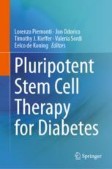Search
Search Results
-
Circulating tumour cells predict recurrences and survival in head and neck squamous cell carcinoma patients
Patients with head and neck squamous cell carcinoma (HNSCC) are at a high risk of develo** recurrence and secondary cancers. This study evaluates...

-
Tumour Growth Mechanisms Determine Effectiveness of Adaptive Therapy in Glandular Tumours
In cancer treatment, adaptive therapy holds promise for delaying the onset of recurrence through regulating the competition between drug-sensitive...

-
Macrophage heterogeneity and its interactions with stromal cells in tumour microenvironment
Macrophages and tumour stroma cells account for the main cellular components in the tumour microenvironment (TME). Current advancements in...

-
Crosstalk between CAFs and tumour cells in head and neck cancer
Head and neck squamous cell carcinomas (HNSCCs) are amongst the most aggressive, complex, and heterogeneous malignancies. The standard of care...

-
Mechanisms and significance of entosis for tumour growth and progression
To date, numerous mechanisms have been identified in which one cell engulfs another, resulting in the creation of ‘cell-in-cell’ (CIC) structures,...

-
EMX2OS targeting IGF2BP1 represses Wilms’ tumour stemness, epithelial–mesenchymal transition and metastasis
Wilms’ tumour (WT) is the most typical type of renal tumour in children, which has a poor prognosis and high recurrence rate. This study explored...

-
Completing a genomic characterisation of microscopic tumour samples with copy number
BackgroundGenomic insights in settings where tumour sample sizes are limited to just hundreds or even tens of cells hold great clinical potential,...

-
A diversity of novel type-2 innate lymphoid cell subpopulations revealed during tumour expansion
Type 2 innate lymphoid cells (ILC2s) perform vital functions in orchestrating humoral immune responses, facilitating tissue remodelling, and ensuring...

-
Tumour-specific phosphorylation of serine 419 drives alpha-enolase (ENO1) nuclear export in triple negative breast cancer progression
BackgroundThe glycolytic enzyme alpha-enolase is a known biomarker of many cancers and involved in tumorigenic functions unrelated to its key role in...

-
Hepatocellular carcinoma cells remodel the pro-metastatic tumour microenvironment through recruitment and activation of fibroblasts via paracrine Egfl7 signaling
BackgroundThe tumour microenvironment consists of a complex and dynamic milieu of cancer cells, including tumour-associated stromal cells...

-
Neutrophil extracellular traps induced by the hypoxic microenvironment in gastric cancer augment tumour growth
BackgroundInflammation-related predisposition to cancer plays an essential role in cancer progression and is associated with poor prognosis. A...

-
Mesenchymal/stromal stem cells: necessary factors in tumour progression
Mesenchymal/stromal stem cells (MSCs) are a crucial component of the tumour microenvironment (TME). They can be recruited from normal tissues into...

-
MiR-297 inhibits tumour progression of liver cancer by targeting PTBP3
Whereas increasing evidences demonstrate that miR-297 contributes to the tumour development and progression, the role of miR-297 and its underlying...

-
When dormancy fuels tumour relapse
Tumour recurrence is a serious impediment to cancer treatment, but the mechanisms involved are poorly understood. The most frequently used...

-
Safety Issues Related to Pluripotent Stem Cell-Based Therapies: Tumour Risk
As the exciting era of regenerative medicine has dawned, considerable efforts aim to further develop human pluripotent stem cell (hPSC)-based...
-
Pancreatic cancer cells upregulate LPAR4 in response to isolation stress to promote an ECM-enriched niche and support tumour initiation
Defining drivers of tumour initiation can provide opportunities to control cancer progression. Here we report that lysophosphatidic acid receptor 4...

-
The differential cancer growth associated with anaesthetics in a cancer xenograft model of mice: mechanisms and implications of postoperative cancer recurrence
Anaesthetics may modify colorectal cancer cell biology which potentially affects long-term survival. This study aims to compare propofol and...

-
NRF2 activation promotes the recurrence of dormant tumour cells through regulation of redox and nucleotide metabolism
The survival and recurrence of dormant tumour cells following therapy is a leading cause of death in patients with cancer. The metabolic properties...

-
Blocking the CXCL1-CXCR2 axis enhances the effects of doxorubicin in HCC by remodelling the tumour microenvironment via the NF-κB/IL-1β/CXCL1 signalling pathway
Inflammation is a core mechanism for oncogenesis. Chemokines act as important mediators of chronic inflammation and the tumour inflammatory response....

-
Liver-specific deletion of miR-181ab1 reduces liver tumour progression via upregulation of CBX7
MiR-181 expression levels increased in hepatocellular carcinoma (HCC) compared to non-cancerous tissues. MiR-181 has been widely reported as a...

